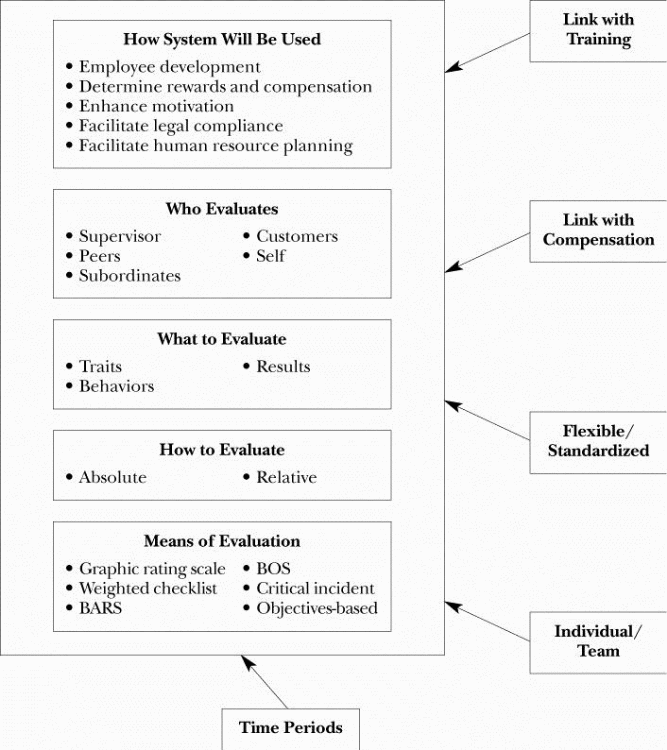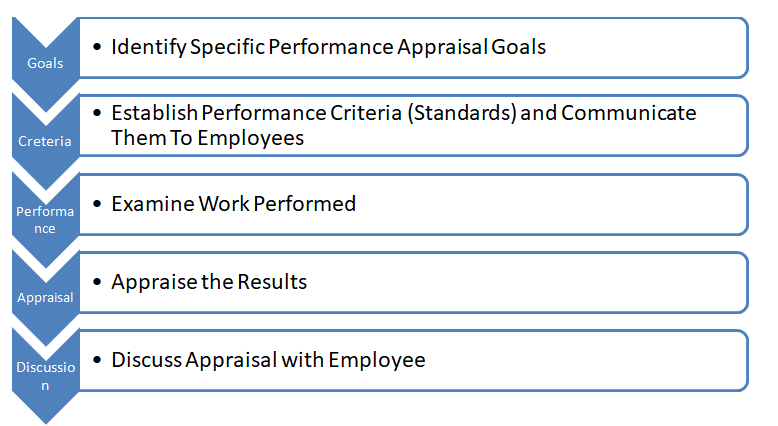Introduction
Management performance systems are systems put in place to deal with the performance of employees at the workplace. The systems have been put in place following their growing importance in organisations especially when it comes to issues such as achievement of the organisation’s goals and objectives, globalisation, and competition among others.
It is crucial for the HR to have updated performance appraisal systems and strategies to improve the already set performance management systems to capture the dynamics associated with the workplace. Performance at the workplace can be described as the outcome of individual’s work or efforts at the workplace.
However, as the study reveals, management performance system as a HR function is a crucial problem not only in my organisation but also in others based on the way it has been inefficient hence calling for strategies to develop it to realise optimal organisation’s outcomes.
Problem Aspect to the Human Resource Management
The problem within the organisation where I work revolves around the management of the performance system especially when it comes to addressing the key factors that constitute performance whether good or bad: motivation, environment, knowledge, skills, and attitude. Precisely, the problem is based on how to appraise staff in the organisation.
The system set for appraising employees is not up to the required standards. In fact, the poor presentation of key objectives of the organisation has led to poor allocation of duties to the various employees to the level that they do not know what is expected of them. It is worth noting that the scope of job of any worker is what the HR uses to appraise him or her.
Therefore, a poorly defined scope of work that sometimes coincides with that of another worker will automatically imply a misinformed basis of appraising the workforce. The purpose of the performance benchmarks in an organisation is to evaluate the workmanship of employees within the organisation by looking at certain aspects of the employees’ performance.
This case therefore makes the management of the evaluation or simply the appraisal very important to the organisation as well as to the individual employees who are being appraised. Performance management is the whole process of setting standards, the appraisal bit, and the steps after the appraisal.
Appraisal is meant to serve an administrative purpose to the organisation as well as a developmental purpose to the individual employee. The problem with a poorly managed appraisal system is that it leads to the development of negative aspects within the organisation and between the employee and the organisation.
Challenges of Performance Management
Performance management, especially the appraisal system bit, has experienced a few challenges in my organisation. The system has faced massive failure since it was set up because it was done in theory but not in practice. Staff members at the organisation have poorly understood the implication of appraisal system thus leading to the staff being demoralised.
Most staff people at the organisation have a feeling that the appraisal system has been brought to bring them down. They believe that the appraisal bit of the performance management is intended to justify any decisions that the management has planned to come up with concerning a performance issue against them (Mahor 2808).
Since the appraisal system was introduced into the organisation, it has led to the development of an acrimonious relationship between the management and the staff in general. According to Lavertu and Moynihan, most members of staff expect only a positive word from the management after performance appraisal (339). Any negative word is taken to be unfair.
On the other hand, the management seems to be using the system only for public relation purposes so that it is seen to be doing its work in a certain way. This case has led to many recommendations coming up from the performance management being ignored when it comes to implementation.
Causes of the Problem
Causes of the problems that the performance management system faces can be attributed to the following reasons:
When the appraisal system was brought, the management failed to involve the lower level staff in the whole issue. This case led to the development of a negative perception by the staff members towards the whole system because they do not have the right information on the purpose of the system. Failure to train employees on the functions of the appraisal system led to the development of mistrust over the system.
Most employees of the organisation do not know how to use the performance management tools such as the one under scrutiny. Therefore, whenever they are required to use them, they tend to commit mistakes leading to wrong outcomes. This problem can be attributed to lack of training on the use of the tools when they were brought in the organisation and hence the confusion the faced when workers use them.
On the other hand, the management of performance has been hampered by the failure of the administration of the organisation to act on the findings that are always brought out by the reports on performance.
This failure makes the purpose of doing the whole performance management issue useless because it does not serve the purpose it was meant to provide. When other staff members view it from this point, they also fail to take the whole exercise seriously.
A Suitable Solution
The management of the organisation should take the following steps as a way of providing a solution to the problem:
Train staff at all levels- The organisation should introduce a training program to all staff whose performance will be under watch. This strategy will help the staff people to understand the purpose of the whole performance management as it will also make them have a positive attitude towards appraisal system. This move will make them cooperate fully whenever the performance exercise will be going on.
Staff involvement- Staff at all levels should participate in the performance management as a way of making them own the process and have a wholesome performance management for the organisation.
Performance management should not be one-sided, but should be done from all levels of the organisation. Every staff should have a role to play in the organisation in areas such as appraising and evaluation together with the reasons, means, and importance of each area as shown below.

Source: (Lavertu and Moynihan)
There should be a follow up – Performance management can only be complete if the recommendations made can be followed up and acted upon in the best way possible. This step will make it achieve the purpose it was meant to supply because any action that will be taken would be meant to make the organisation better.
The Implementers of the Solution
The management of the organisation as the body should implement the solution with the responsibility of making any changes to it. Therefore, in this case, the management involves all levels of administration starting with the supervisors as the first line of management.
The senior management should come up with the necessary plans for the program and involve supervisors when it comes to preparing a program for implementing the plan (Amy and Spiller 605). The HR Should:

Source: Source: (Lavertu and Moynihan)
The supervisors otherwise known as the first-line managers will act as the link between the top management and the lower level employees who will be affected by the program. There will be the need for proper communication along all lines of the organisation so that there is no misunderstanding between any levels of the organisation.
Misunderstanding of issues usually leads to the goodwill being taken away because it develops into mistrust. At the end of the program, Knight advises that all findings should be communicated to all concerned parties without bias, with all the recommendations being acted upon in the best way that will secure the interests of the organisation (Para. 1).
Obstacles while implementing the Solutions
Obstacles while implementing the solutions can lead to the solutions provided above not being implemented. An obstacle in this case that can lead to such a problem can be a personal interest from the implementers of the program. The program should not have any form of bias in its implementation. However, once personal interest comes, the interest of the individual will take the first priority against the organisation’s interest.
According to Amy and Spiller, when staff members feel that the ongoing appraisal program would threaten their positions, this feeling can lead to sabotaging the whole process as a way of distorting the outcomes of the results (606).
Another obstacle is the failure by the management to run the program as it is supposed to be done. This situation can be due to lack of enough resources to implement the program therefore making it lame. This case will definitely lead to the failure of the program because, like any other activity, it would need adequate resources for it to succeed.
Works Cited
Amy, Dalton, and Stephen Spiller. “Too Much of a Good Thing: The Benefits of Implementation Intentions Depend on the Number of Goals.” Journal of Consumer Research 39.3(2012): 600-614. Print.
Knight, Rebecca. Delivering an Effective Performance Review, 2011. Web.
Lavertu, Stephane, and Donald Moynihan. “The Empirical Implications of Theoretical Models: A Description of the Method and an Application to the Study of Performance Management Implementation.” Journal of Public Administration Research & Theory 23.2(2013): 333-360. Print.
Mahor, Mellat. “Quality Citizenship, Employee Involvement and Operational Performance: An Empirical Investigation.” International Journal of Production Research 51.10 (2013): 2805-2820. Print.